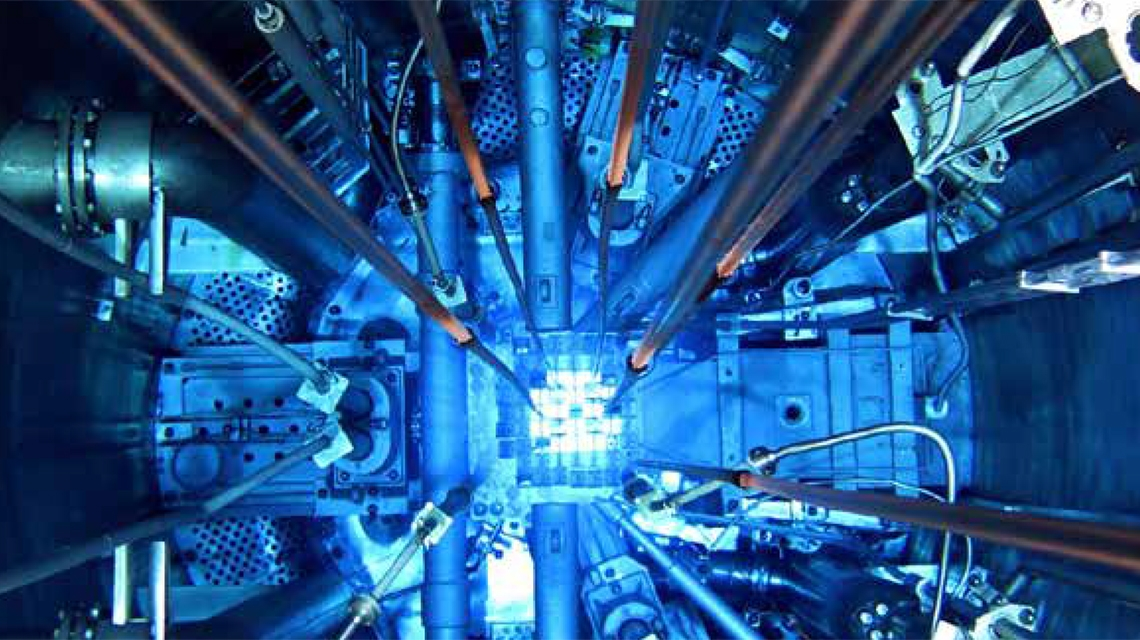Report by Swasti Sharma
The first thing that strikes your mind when you hear the word ‘Apsara’, might be the dancing fairies described in Hindu and Buddhist culture or the name of a stationary brand. But this Apsara is none of them!
This Apsara was not only the oldest and the first nuclear research reactor of India but of the entire continent, Asia. It was commissioned by Bhabha Atomic Research Centre (BARC). The nuclear reactors which are used for research, development, education and training are nuclear research reactors. They produce neutrons for use in various fields. They require nuclear reactors which are not used for power generation.

August 4th is Apsara Day!
You might be wondering why it was named as APSARA?
You can correlate this with the beauty of dancing fairies (apsaras)! Actually this happened in reality. The former and then Prime minister of India, Mr. Jawahar Lal Nehru compared the Blue Cerenkov radiations (It is a bluish light which is seen in nuclear reactors where water is used as a moderator) with the beauty of Apsaras. Hence it was named APSARA.

Apsara was a pool type reactor of 1 MW (Mega Watt) power with enriched uranium as fuel weighing 4.5 kg. It is present in the form of plates. Plate type fuel is composed of uranium wedged between metal claddings.
In this reactor, aluminium is used for metal cladding. Light water [the water that is naturally occurring and deuterium (the second isotope of Hydrogen) deficient) was used as both moderator and coolant. Moderator is a material (like here it is light water) used to slow down the high velocity neutrons. Coolant is a substance (like light water) used to regulate temperature.
The maximum neutron flux (the total distance travelled by all free neutrons per unit time and volume) was around 1013n/cm2 /s. The reactor was built with assistance from the United Kingdom, which provided the initial fuel.
On 4th August 1956, the nuclear reactor APSARA attained criticality.
Criticality refers to the state of a nuclear reactor when the nuclear fission reaction becomes self-sustaining. This means that each fission reaction releases enough neutrons to sustain the chain reaction. This is an important milestone in the commissioning of a reactor.
Apsara was permanently shut down in June 2009 for a revamp.
Some uses of Apsara
- Production of isotopes (Isotopes are the nuclear species of the same element having the same number of protons but different numbers of neutrons.)
- Basic research on different fields.
- Shielding experiments
- Neutron activation analysis (the measurement of gamma rays emitted from a sample that was irradiated by neutron)
- Neutron radiography (the process of producing image of neutron)
- Testing of neutron detectors
APSARA- UPGRADED
Apsara-U (Apsara- Upgraded) is commissioned. Its First Approach to Criticality (FAC) has been achieved on 10th September 2018. A higher-capacity swimming pool type research reactor was inaugurated at Trombay, Mumbai.
What changes took place in APSARA-U?
- Apsara- U is a swimming pool type thermal reactor with capacity of 2 MW (Mega Watts).
- The fuel used in this reactor is made up of Uranium Silicide/ Low Enriched Uranium (LEU) which is again Plate type with metal being Aluminium.
- The core size increased from 560 mm X 560 mm X 615 mm to 662 mm x 662 mm x 140 mm; 64 lattice positions (The space covered by an atom, molecule or ion is depicted by points, these are lattice points).
- Its maximum neutron flux is 6.1X1013n/cm2/sec.
- The moderator and coolant remain the same, that is light water. Besides one more category is added which is Reflector. Beryllium Oxide works as a reflector. Reflector helps to bounce the escaping neutrons back into the core.
All images: BARC;

